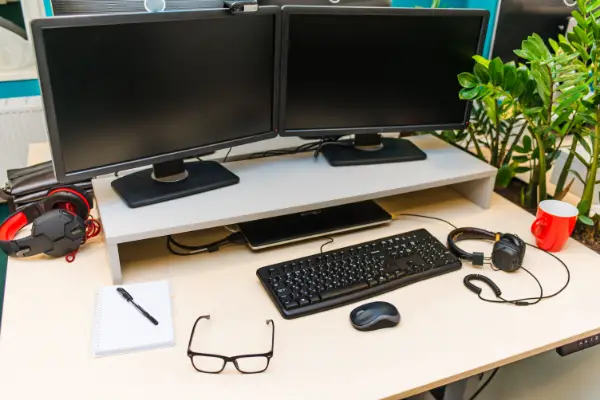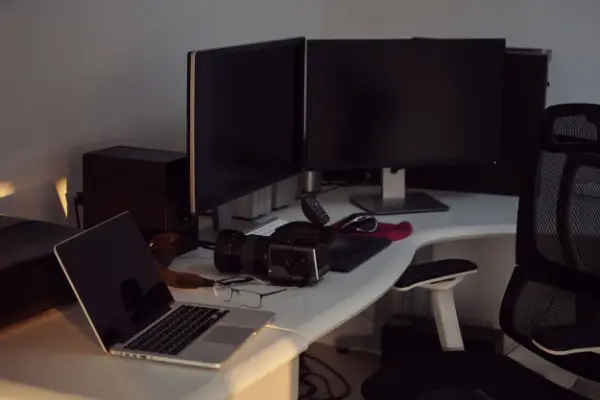Disclaimer: This post may contain affiliate links, meaning we get a small commission if you make a purchase through our links, at no cost to you. For more information, please visit our Disclaimer Page.
FPS is an acronym for Frames-Per-Second. It is commonly referred to as Frame Rate. As the name suggests, FPS is the unit of measure of frames that your computer monitor displays per second. Most individuals argue that higher FPS is better than lower FPS. Nevertheless, the critical question is whether monitors affect FPS. If you are wondering if monitors affect FPS, then read on.
Your monitor does not affect FPS. This is because FPS is the number of frames your computer produces. Your monitor is responsible for refreshing images. Refresh rate doesn’t affect frame rate (FPS). However, if your monitor has lower refresh rate capabilities, it may put a cap on the frame rate.
Frame rate and refresh rate are two separate entities, although sometimes, one may affect how the other works. Refresh rates are measured in frequencies denoted as Hz.
Frame rate is primarily independent unless it is higher than the refresh rate. In such a scenario, the monitor will not be able to display all the frames your machine is creating.
The article will further explain if monitors affects frame rates. Additionally, Iit will tell you if a monitor can cause FPS to drop. If you wonder whether your monitor’s size or a dual monitor affects FPS, then buckle up and read in-depth.
You will also get some valuable info on external monitors and their effect on FPS.
Table of Contents
Can Monitor Affect Fps?
It is common knowledge that monitors don’t affect frame rate. However, monitor features such as the refresh rate can set a cap on the FPS.
Different monitors have different qualities and capabilities. This translates to different refresh rates. A monitor with lower refresh rate capabilities may not be able to support colossal frame rates.
For this reason, before purchasing a monitor, I suggest you first get some info on its refresh rate capabilities.
Even with an upgraded and more powerful CPU configuration, you may still end up with a low FPS count on your screen display.
To illustrate, let’s say you have a powerful CPU that creates more than 60 FPS to display on the monitor, yet, you are using a 60 Hz refresh rate monitor.
Your monitor will be overwhelmed and won’t be able to keep up with this frame rate. You will end up having a low-quality resolution than you anticipated, even with an upgraded CPU.
The monitor’s refresh rate, display, and frame rate count have a close relationship. A monitor with a high refresh rate, say 240 Hz, will have a high display and consequently more FPS count than its lower counterparts.
Additionally, a monitor with a refresh rate capable of supporting a high fps will have better image quality.
Can A Monitor Cause an FPS Drop?
Monitors affect the FPS count and, consequently, the display. A monitor with a high-resolution rate will have a high FPS rate than that with a low-resolution monitor when connected to the same CPU.
Therefore, if you want a monitor with a superior video display, look for a monitor with better specifications. High-quality monitors possess stronger and better capabilities thus have the ability to produce a much higher FPS count.
When looking for a monitor, find one that has a high resolution and a high refresh rate.
Resolution is the visual dimensions of any given display. Monitor resolution is simply the composition of the specific number of pixels.
On the other hand, the refresh rate is the number of times your monitor can refresh its images per second. A higher refresh rate will guarantee you more precise and smoother images on your monitor.
It is also essential to note the monitor you are buying. In the market today, we have specific monitors for gaming and media.
Media monitors are not made for displaying high graphics images and therefore have a low refreshing rate. This will limit it to the number of fps per second despite having a powerful CPU.
You may have a powerful CPU and GPU that can generate up to 144 Hz refresh rate. However, since your monitor has a refresh rate of 75 Hz, you will be limited to a frame rate of 75. This is a classic example and explanation of how a monitor can cause an FPS drop.
To avoid issues with your monitor dropping the FPS count, it is advisable to go for monitors with a higher resolution if you are a gamer. Gaming monitors can be the best way to avoid the troubles of monitors dropping your FPS count.
Does The Size Of The Monitor Affect FPS?
Most people think that the size of the monitor affects its FPS. The general argument is that the bigger the screen, the less the FPS count and less resolution and display.
In contrast, the size doesn’t matter. What matters is the monitor’s resolution power. A bigger monitor with a higher resolution will have a higher FPS count than a smaller monitor with a low-resolution rate.
If you are a gamer, embrace the gamers’ life and go for that big monitor to enhance your gaming experience and make you enjoy every moment. What you have to keep in check, however, is the CPU and your GPU abilities.
Some of the problems that may make you experience a lower FPS on your monitor display is the type and technology of connectivity you are using.
The technology used in connectivity is either the old VGA technology which unfortunately has limitations and won’t give you a maximum frame rate per second.
It is better to use a quality HDMI cable, display port, or a thunderbolt port for maximum frame rates per second and consequently a high-quality display.
Does Dual Monitor Affect FPS?
It is very reasonable to think that having two monitors will decrease your monitor’s FPS count. Many argue that the graphics card will have work double its capacity.
Graphics cards can run on two monitors at a go and still produce impeccable FPS counts on both. For most of the basic monitor users, the display won’t experience any hit on the FPS count.
This will provide the user with a high-quality image display on their monitor. Having dual monitors, therefore, does not affect the FPS.
In most cases, playing video content on your monitor is what will require more FPS. Therefore, when you are using dual monitors with no video content, you need not worry.
There have been cases where people reported slags. They claim that this happens when they play high graphical games on both monitors.
When you are playing a high graphic video game on both your monitors, you will notice that they require more FPS count to maintain a smooth image display on the monitor. This causes stress on the graphics card and may cause slags.
What might be of consideration when using dual monitors to play games is the type of games you are playing. Some games will play with no effect at all. Plus, others may have problems, mainly caused by bezels where the two monitors are connected.
You should note that if you are using dual monitors, they should be of the same kind. This will guarantee that the video quality is similar on both.
Using two different monitors might have you thinking that there is a reduced FPS count, especially if one of the monitors has a low resolution. Even then, the low-resolution monitor will have a low FPS video output.
To avoid two different video qualities, you should use the same quality monitors.
Does Using An External Monitor Increase FPS?
Connecting an external monitor should increase your FPS and display. This is because of the technology that is mainly used. Laptops mostly have a tech that ensures longer battery life, which limits the graphics of the images on their monitor.
Most laptops have Optimus, a lower-powered integrated graphics within the central processing unit used to send display signals to the screen. They are more energy-efficient, consume less power, and thus save on battery life.
However, the Optimus technology is very low compared to NVidia or AMD. These powerful discrete graphics sit idle in the GPU when no intensive tasks are running in the system. It’s until you start a game that the more powerful discrete graphics will be used to produce the frames.
When it comes to the Optimus system, the GPU sends this output through low-powered integrated graphics.
Depending on the game and the settings, this can cause situations where the laptop technology reduces the FPS significantly. This is why external monitors increase frame rates.
Many computers have display output ports such as HDMI or Display Ports wired directly to the discrete graphics.
This, therefore, means that by running an external monitor connected to the ports, you will be overriding the Intel integrated graphics and Optimus. Thus, the technology used in the CPUs maintains a high resolution and FPS count to the external monitor.
It’s important to know that you’ll still get low FPS when using an external screen if the laptop’s screen is in use. To avoid this, you should close the lid of the computer when connected to an external monitor. You can also use the shortcut key on the laptop to choose which display to use.
Use the shortcut key to pick the second screen only; you can also do this via Windows. This disables the laptop screen without you having to close the lid. This is important because some laptops require the cover to be open to avoid overheating.
I am not implying that you take an external monitor to get this performance boost. However, if you are using your laptop at home, you could easily connect it to an external screen. This will give you a better image display in terms of a larger better-looking screen and higher frame rates per second.
Conclusion
To sum all this up, if you are a gamer or a person who loves to enjoy a high-quality display on your monitor, there are various ways to help you boost your monitor’s FPS. This article provides you with some of the best ways to increase your FPS count, have clearer images on your monitor, and, thus, a great monitor time.


